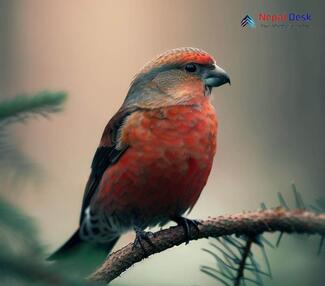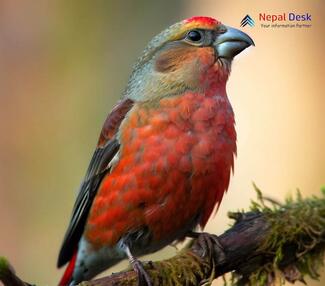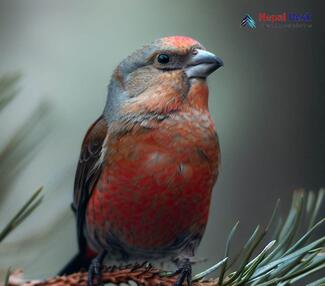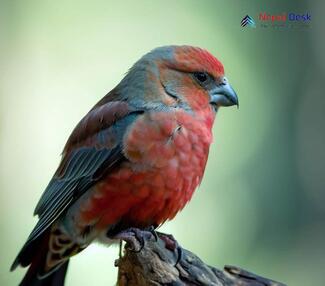Nepal, a country known for its breathtaking landscapes and rich biodiversity, is home to numerous unique species of flora and fauna. One such fascinating bird that has captivated the interest of nature lovers and birdwatchers alike is the Common Crossbill (Loxia curvirostra). It is a small passerine bird in the finch family Fringillidae. It was first formally described by Swedish naturalist Carl Linnaeus in 1758 AD. Found in the dense coniferous forests of Nepal, these mesmerizing birds are known as "Red Crossbill" in North America. Here in this article, we shall be looking at the various details and aspects of this beautiful bird under various topics.
The Allure of the Crossbill's Beak
The most distinctive feature of the Common Crossbill is undoubtedly its beak. Characterized by mandibles that cross, rather than meet at a single point, this unique adaptation allows the bird to skillfully extract seeds from conifers, their primary food source. The precision with which they can crack open a cone and fetch seeds is truly awe-inspiring, making them a magnificent sight to behold.
Variations in Plumage
Common Crossbills exhibit sexual dimorphism, meaning males and females can be easily distinguished by their colorful plumages. Males showcase a vivid brick-red color, while females adorn an understated mix of greens and yellows. This contrasting coloration not only makes them visually striking but also helps birdwatchers to quickly identify the sex during expeditions.
Behavioral Traits and Breeding Patterns
These enigmatic birds are known for their nomadic lifestyle as they move from one coniferous forest to another in search of new food sources. Although mostly seen in small flocks, crossbills can also occasionally gather in larger numbers when cones are abundant.
An interesting aspect of their breeding pattern is that it’s closely linked to food availability. The Common Crossbill doesn’t follow a set season for breeding; instead, it synchronizes its reproduction with peak cone production periods to ensure ample food supply for both adults and fledglings.
Conservation Efforts and Ecotourism
Due to habitat loss and fragmentation, the Common Crossbill population has experienced declines in some parts of Nepal. To protect these charming birds, it’s essential to preserve their coniferous forest habitats. In addition, promoting ecotourism and birdwatching can contribute to raising awareness about the importance of conserving these natural landscapes.
For those planning a trip to Nepal, witnessing the extraordinary Common Crossbill in its natural environment is undoubtedly a once-in-a-lifetime experience. Exploring the dense coniferous forests while observing these remarkable birds offers an unparalleled opportunity to connect with nature and appreciate the rich biodiversity of the region.




